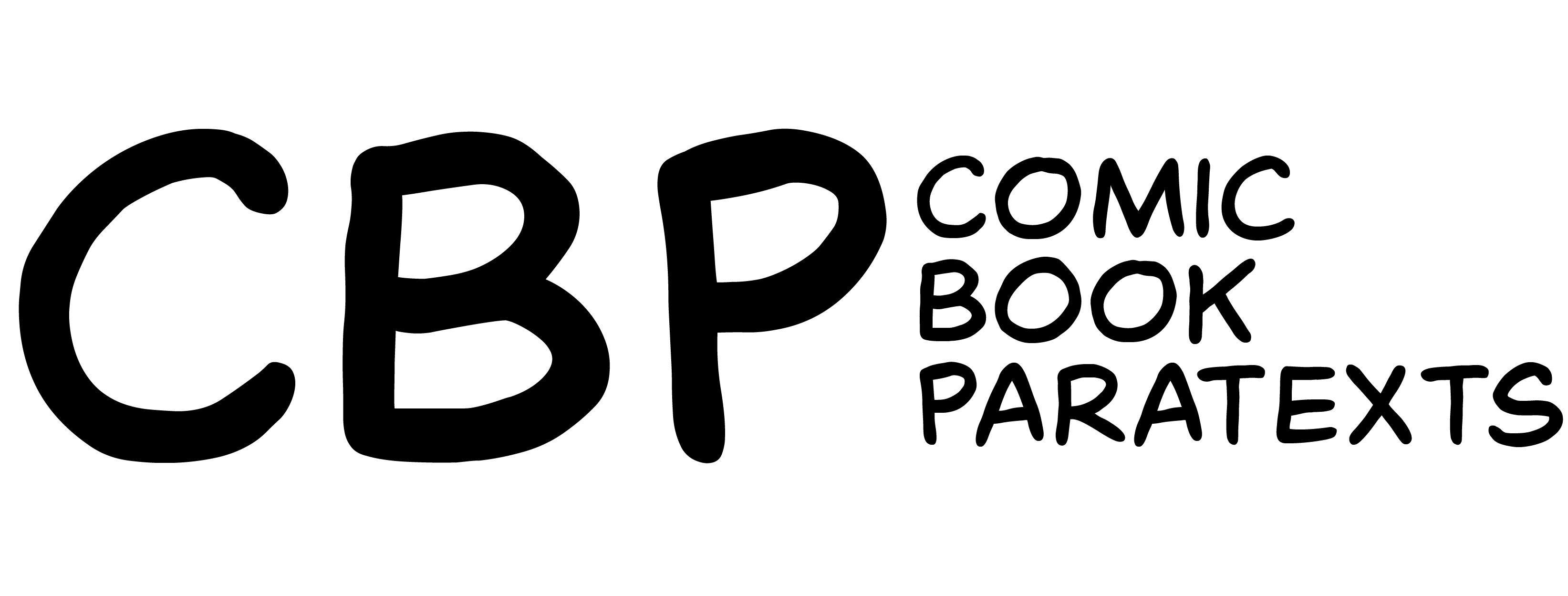Project-specific controlled vocabularies for Comic Book Paratexts
Paratext types
advertisement- A commercial advertisment for a product or service.
postface- A concluding text, “consisting of discourse produced on the subjecte of the text that …precedes it.” (Genette, p. 161)
authorial epitext- Commentary by the author(s)/creator(s) about the text that occur outside the text. Genette defines epitexts as “[A]ll those messages that, at least originally, are located outside the book, generally with the backing of the media (interviews, conversations), or under cover of private communication (letters, diaries, and others)” (Genette, p. 5). For comics these authorial epitexts are frequently found in published interviews, social media commentary, blog posts, or in archival collection of letters, diaries, and other personal papers.
correspondence- Correspondence, typically between readers and publishers, editors, creators. Often found on “fan mail” or “letters of comment” pages in American comic books.
cover- The cover of the text or comic. For traditional American “floppy” comics, the cover is typcially the from recto page of the comic, which may include a cover image, magazine and story title, price, bar code, and more. Some comics include a “wraparound” cover with the image continuing on the back cover, the final verso page of the comic. “Graphic novels,” trade paperbacks, and larger bound reprints of comics often include more typical hard or soft book cover, with optional dust jacket or other appendages.dedication- A note of dedication, typically near the beginning or end of the work.
documentary epitextdocumentary paratexteditorialepigraphintertitle- Internal titles, chapter or section titles.name of author- The name of the author appearing in the text. In comics, there are often many “authors,” or creators involved in the production of the comic, including writer, artist, inker, letterer, colorist.note- An explanatory statement, typically linked to a particular segement of a text. Genette defines a note as “a statement of variable length (one word is enough) connected to a more or less definite segment of text and either placed opposite or keyed to this segment” (p. 319).
please-insert- A short text that summarizes the work to work it refers, originally separate sheets of paper inserted in a work for the benefit of potential reviewers. “A short text (generally between a half page and a full page) describing, by means of a summary or in some other way, and most often in a value-enhancing manner, the work to which it refers” (Genette, pp. 104-105).
preface- An introductory text, “consisting of discourse produced on the subjecte of the text that follows … it.” (Genette, p. 161)
public authorial epitextpublisher’s peritext- Paratexts that may be attributed to the publisher (rather than the author/artist). Genette includes things like the size and format of a book, the series to which a book belongs, and the “cover and its appendages.” Of course, in comics the cover is not strictly a publisher’s paratext, but can include substantial content from the writer, artist, and other creators. Genette describes the publisher’d paratext as
the whole zone of the peritext that is the direct and principal (but not exclusive) responsibility of the publisher (or perhaps, to be more abstract but also more exact, of the publishing house) - that is, the zone that exists merely by the fact that a book is published and possibly republished and offered to the public in one or several more or less varied presentations. The word zone indicates that the characteristic feature of this aspect of the paratext is basically spatial and material.
- Paratexts that may be attributed to the publisher (rather than the author/artist). Genette includes things like the size and format of a book, the series to which a book belongs, and the “cover and its appendages.” Of course, in comics the cover is not strictly a publisher’s paratext, but can include substantial content from the writer, artist, and other creators. Genette describes the publisher’d paratext as
solicitationtable of contentstitletypeface
Tags
comics- paratexts that contain comics or sequential art
fandom- paratexts that contain content related to fans or fandom
gamesgenderhouse adin memoriamindiciainterviewmapsnetworknewspin-uppropogandareader-contributed contentreferencewar
Works Cited
Technical Credits - CollectionBuilder
Comic Book Paratexts is built with CollectionBuilder, an open source framework for creating digital collections and exhibits. CollectionBuilder is developed by faculty librarians at the University of Idaho Library following the Lib-Static methodology.
